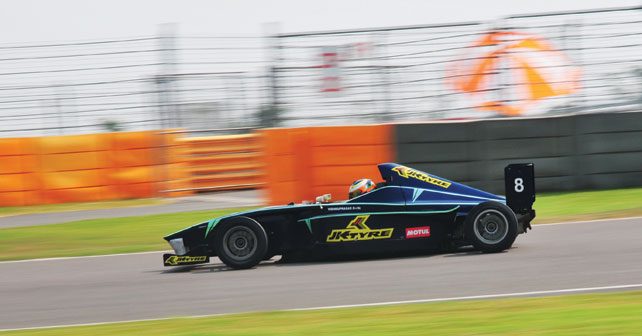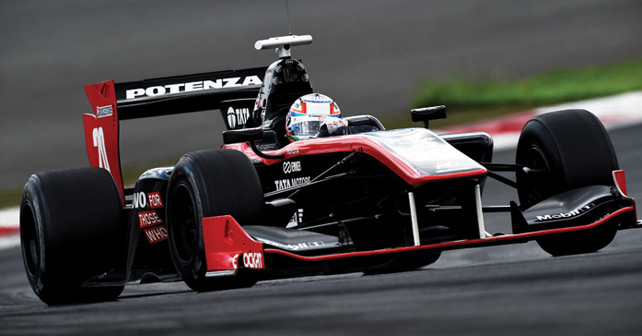Stagnation seems to be prevalent in many sections of Indian motorsport with the achievements of a few providing some balance.
Is it cynicism or a feeling of resignation that makes the people involved in motorsport in India snigger and chuckle when I ask them what they feel about the state of the sport in India at the moment? Maybe it’s a bit of both although I personally hope that the balance tilts more towards cynicism.
At least that can be cured via the hosting of fun events and the achievements of individuals in their respective disciplines. We figured getting the views of some experienced players in motorsport who have competed around the world would help us find a balanced critique of the state of motorsport in India.
Racing
Cicruit racing in India – both on two wheels and four – can be put into two categories. Development series and fun series. Examples of the latter are the JK Superbike Cup and arguably even the Indian Touring Car Championship, where hardcrore enthusiasts are willing to pour in their own money in spades to have fun on track. Development series would be the likes of karting and single seat series across the the JK Tyre and MRF banners.
There is what Narain Karthikeyan feels is a persistent problem of drivers from karting not being able to step up to decent machinery in single-seaters on account of a fear of moving freely across what JK and MRF have to offer. It is a problem that requires certain individuals to loosen up but in the shorter and more immediate term there is the problem of stagnation.
In the opinion of Karun Chandhok, the development series encourage him in that he sees new faces, albeit not enough of them.
“I get the feeling that there should be a two or three season limit for anyone who takes part in development series,” Chandhok told autoX. “When someone keeps doing the same series over and over for four or five years, it doesn’t allow enough fresh blood in the sport.
“Drivers should be told that they have a limited time in which to make the most of racing in these series that are meant to find talent.”
There is a strong argument, though, of the older drivers being a benchmark for the newcomers, although this can be achieved by awarding occasional guest drives to senior drivers whose data would then be freely available to youngsters.
Based on his experience in Europe, more full-time professionals in motorsport would also help things a lot according to Sarath Kumar. “I see both in Europe and even Asia where people’s only job is in motorsport,” Kumar told autoX. “It’s not like they have other businesses to support their racing.”
He did, however, understand that greater flexibility among the corporate sector in those countries also helped a great deal. “Local food companies are willing to committ to the equivalent of Rs. 20 lakh to motorsport in Europe because they know that even a little bit of publicity is good for them.
“Here companies in the automotive sector won’t even bother to follow up on calls or emails.” This puts the onus on centrally controlled and one-make series to serve as development series and also allow those companies involved get publicity without the threat of being bested by another brand. It creates a base, but a far from ideal one. “Single-make championships are not the way to go forward,” feels Karthikeyan. “It is too expensive and cumbersome to field an entire championship just to race twenty of your own cars against each other.
“Organizers and the motorsport federation need to be proactive and come forward with a plan with shared costs and responsibilities to attract manufacturers.”
Rallying
Attracting manufacturers is something that would also serve car rallying very well in the opinion of Gaurav Gill, who has managed what he feels is the ultimate in motorsport job security for a driver; being employed by an automotive company.
“I feel myself to be extremely fortunate to be driving for Mahindra as they are serious about competing in rallying and have been clear about their ultimate aim of competing in the Dakar Rally,” said Gill. “But the vision that is prevalent within the company that made their motorsport program possible is missing in many auto companies in India.
“It takes the right people with the right attitude of using motorsport to compete against other manufacturers to make their products better for it to become a reality. In India, unfortunately, there are way too many companies that are happy with using cricket or Bollywood to market their products.”
What makes this even more of a regret for Gill is that he feels that there are enough capable drivers and technicians involved in rallying in India to make the level of preparation higher than that of South-East Asian countries, which have better access to cars that are suited to rallying unlike in India.
“I see drivers from India going to compete in Malaysia and I scratch my head,” said Gill. “The level of competition among drivers as well as the preparation of the vehicles is far higher here in India. There may not be enough cars here that are well suited for rallying but it is still better for a driver to compete here.”
There is no dearth of good participants among rallying on two-wheels either as far as C S Santosh is concerned, who is optimistic of seeing them get their hands on better machinery as the demand for off-road motorcycles slowly starts to be met by manufacturers. Until then, however, Santosh feels that efforts should be made for more rallies to be held in India, rather than just wait for one or two big-ticket events.
“There’s no need for us to have to wait for a year to go to Rajasthan on account of the Desert Storm,” Santosh told autoX. “There is more than enough space there as well as in estates all over South India to hold three to four day events that do not need as much planning as events like the Raid de Himalaya.
“We have more than enough talented riders to take part in events like this and thanks to the involvement of TVS, guys like Arvind KP and R Natraj are ready to even make the next step to racing abroad.”
The common theme among those we spoke to seemed to stress on building a strong base and providing a ladder for the best among that base to venture out into the world, best summed up by Narain Karthikeyan.
“If the Indian GP is there, great. If not, it won’t make much of a difference. If the money spent in a single GP can be well-channelised into domestic motorsport, things can change.
“Having massive karting grids is pointless if you don’t have enough good car racing championships for those drivers to graduate to. Unless they are well-off enough to just skip the whole shebang and go abroad, it is a waste of parents’ time and hard-earned money.”




































Write your Comment